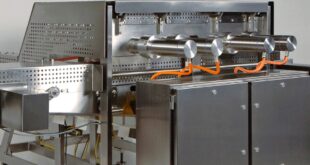Jonathan Wilkins discusses how you can foster an innovation culture in your engineering business
To tackle the medical, engineering and environmental challenges of the future, innovation is essential.
Scientists and engineers must contend with enhancing virtual reality, securing cyberspace, advancing health informatics and engineering better medicines.
Sometimes, this happens by accident, but often it’s the result of a positive company culture.
For engineers to generate ideas and develop them into commercial products that address future challenges, they must work in the right environment.
Businesses should create a culture that inspires their employees, particularly in the face of a serious skills shortage.
The UK requires around 186,000 skilled recruits every year until 2024. To plug the gap, businesses must focus on retaining their staff and getting the best out of their current employees to remain competitive.
Fostering innovation
Removing fear of failure is a crucial step in encouraging innovation. During the design process, several avenues must be explored before settling on a final version — the chances of getting it right first time are extremely low.
During the design stages, iterations that do not meet the right criteria or pass quality tests will be discarded, leaving a final prototype or product that is fit for purpose.
While only one version will go to market, a wide array of designs is critical to ensure the best possible design is achieved. These are not failures, but a crucial step of the process.
As well as removing fear of failure, ensure your culture is blame free. Employees will feel bolder and be more willing to suggest ideas if they know it won’t be held against them.
You could cement this in innovation or creativity workshops, or you could even run an awards scheme to generate competitive spirit.
Share information
To ensure effective use of resources and skills and to generate innovation in line with your business objectives, you must clearly define your goals and your strategy to your entire team.
The new idea can be in the form of a product, process or business model, so be clear if you are looking at all three.
Ensure it is clear why innovation is needed and what business objective it will serve.
Communication across teams, sharing stories and ideas and exciting employees with what’s happening in your business will create a positive collaborative environment.
Often, employees can learn from others in different departments.
Creating diverse, mixed teams can help — employees can bounce ideas off each other using varied technical or business skill sets to bring something new to the table. At EU Automation, we have a diverse, international team working together to achieve a common goal.
Framework
When an idea is raised, ensure you have a method in place to follow it through — don’t let them get lost. There are several frameworks in existence, such as design thinking or running lean.
Adapt a framework to suit your company and its own unique challenges to ensure you make the most of innovative ideas in a structured manner.
Sometimes, innovations are discovered by accident. The microwave, for example, was invented after Percy Spencer discovered that the microwaves from the radar transmitter he was building melted a chocolate bar in his pocket.
Without a structure to manage new discoveries and ideas, innovation could slip through the cracks — I wonder where we’d be without this discovery?
Jonathan Wilkins is director of obsolete industrial equipment supplier EU Automation.
 Engineer News Network The ultimate online news and information resource for today’s engineer
Engineer News Network The ultimate online news and information resource for today’s engineer





